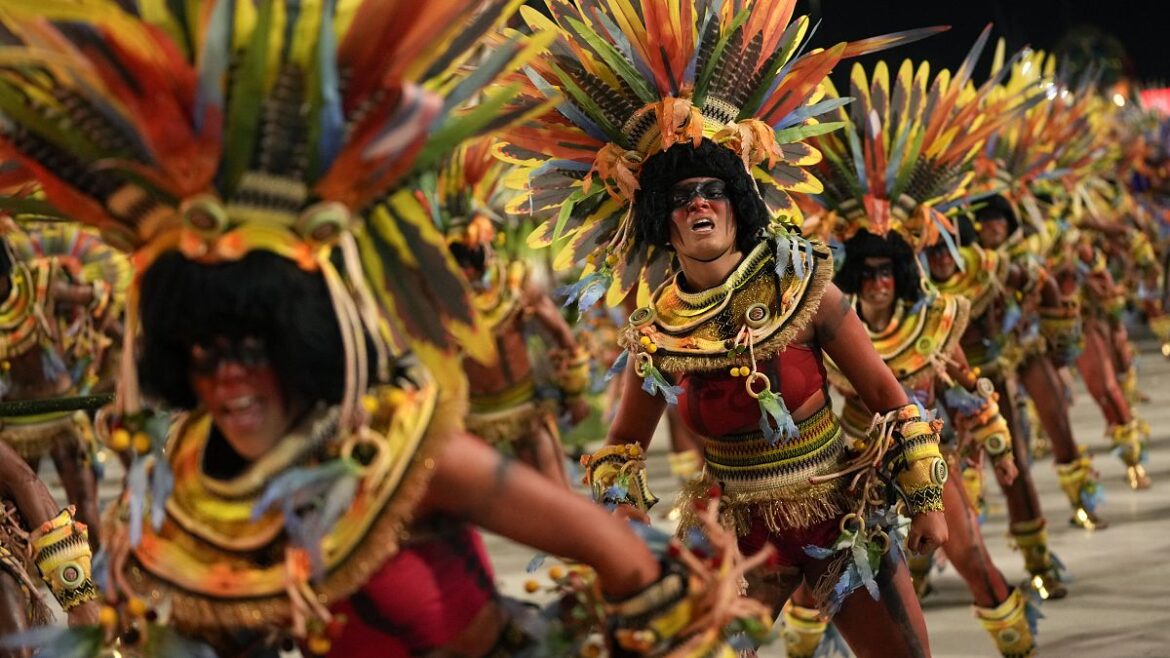The famous Salgueiro samba school took to the Sambadrome on Sunday evening for a parade in the colors of the Yanomami Amazonian people, seriously threatened by illegal gold panning.
>> Rio Carnival parade makes urgent call to end illegal mining on indigenous lands
> Carnival dancers took to Rio de Janeiro’s biggest stage on Sunday evening, their faces painted red according to indigenous tradition, while the percussionists had written “Miners out” on the skin of their drums.
It was part of the Salgueiro samba school’s tribute to the Yanomami, Brazil’s largest indigenous group, with its giant floats, costumes and songs based on the group’s ancestral culture and traditions.
“My Salgueiro is the arrow of the people of the forest“, sang the parade participants as they marched through the Sambadrome, delivering their message to the more than 70,000 revelers present and the millions of television viewers who watched them live.
Illegal gold panning
President Luiz Inácio Lula da Silva is under pressure to deliver on his promises to eradicate illegal mining, particularly due to a recent setback in his efforts. Sunday’s parade comes as Brazil marks the first anniversary of Lula’s declaration of a health emergency for the Yanomami people in the Amazon, who suffer from malnutrition and diseases such as malaria due to illegal mining.
“Our appeal is a cry for help to Brazil and the world“said Davi Kopenawa, a Yanomami leader and shaman who advised the samba school on how to remain loyal to his people, and who marched with Salgueiro.”I hope that the world, hearing our call, will put pressure on the Brazilian government to return all the miners, destroyers of our mother Earth, who contaminate the water and kill the fish.”
Kopenawa paraded wearing feather armbands and headdress, as well as a beaded necklace depicting a jaguar. He was joined by 13 other Yanomami who crossed the country to participate in the Salgueiro parade. One of the first floats was made of a cut tree trunk, with a performer depicting a Yanomami mother seeking to protect her child as invaders approached, and other floats featured massive Yanomami sculptures.
By paying homage to Yanomami history and culture, the Salgueiro School seeks to draw attention to the devastating effects of illegal mining on Yanomami territory, including widespread contamination of waterways , famine and disease.
Some 30,000 Yanomami live in Brazil’s largest indigenous territory, which covers more than 9 million hectares in the northern zone of the Amazon rainforest, along the border with Venezuela.



